 Document setting up the Chain Trade Board, page 1
Document setting up the Chain Trade Board, page 1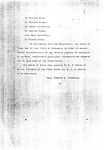 Document setting up the Chain Trade Board, page 2
Document setting up the Chain Trade Board, page 2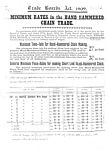 Chain trade minimum rates, page 1
Chain trade minimum rates, page 1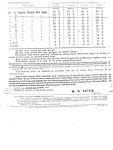 Chain trade minimum rates, page 2
Chain trade minimum rates, page 2 1st prosecution, page 1
1st prosecution, page 1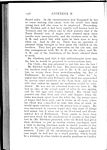 1st prosection, page 2
1st prosection, page 2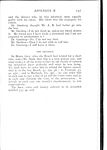 1st prosecution, page 3
1st prosecution, page 3

According to the Select Committee set up to research the issue, sweating was characterised by ‘earnings barely sufficient to sustain existence… hours of labour… such as to make the lives of workers periods of almost ceaseless toil… sanitary conditions… injurious to health of the person employed and… dangerous to the public.’ However, the problem soon became identified with just one of these factors, poverty wages.
There were numerous attempts to solve sweating, such as the restriction of female and child labour, the abolition of domestic workshops, and consumers’ leagues, which encouraged the boycott of goods made using sweated labour. All were found to be wanting. Eventually the Government sanctioned one cautious measure, which was thought would curb sweating at its root, that is the legal control of low pay in the form of the 1909 Trade Boards Act.
The Act established regulatory boards and minimum rates in four trades, chainmaking, box- making, lace-making and finishing, and ready made clothing, all industries in which wages were deemed to be exceptionally low. Initially the Act covered about 200,000 workers, but was later extended to other trades. Although modest by today’s standards, the 1909 Act was the state’s first attempt for nearly a century to control low pay in Britain, and marked a fundamental change in economic and social thought. It was such a departure from the old idea of non-interference with economic laws, that only the absolute necessity of dealing with the evil of sweating secured agreement for the experiment to be tried.
The boards established for these industries consisted of equal numbers of employers’ and workers’ representatives, and a number of independent members nominated by the Board of Trade. In effect, the boards acted as a form of compulsory arbitration on pay. Each Board was to set its own minimum rates, so that those whose livelihoods depended on the trade could fix rates that the trade could bear. If the rates were set from outside, the effect might be to kill the trade rather than benefit those engaged in it.
The first Board established was for the chain trade. The chain industry, it was argued, was ideal for the new experiment: it was localised, and comparatively free from foreign competition; the administration of the board would be easy; the workers were considered to be the most abject and pathetic in the country; and the good employers in the industry welcomed the chance to pay fair wages. Churchill had acknowledged the strength of these arguments, and had dropped the blouse trade from the schedule in favour of domestic chainmaking.
The Act did not cover the factory chain makers, who had been organised into trade unions for some considerable time and were relatively well paid, but only those employed in the small workshops and domestic forges, mostly women, who were not well organised. The Select Committee had commented that nowhere was so much poverty found combined with such severe work and so many hardships. The board agreed on a minimum wage of two and a half pence (1p) an hour. Low as this was, for most women it meant a 100% rise. Their wages had been 4s to 6s for a 50 to 58 hour week. The new rates would give them an average of at least 10s to 11s a week for a 55 hour week. This list of rates became known as the “white list”. The copy reproduced here was found when the Institute building was taken down, and judging from the additions and crossings out, was a working document.
The views of employers in relation to the Trade Boards Act are significant, because this piece of legislation drastically curtailed the industrial freedom of the employers affected by it. It obliged them to pay a certain rate, and to meet the increased wages bill either by making production more efficient, or by passing the rising costs on to the customer. The state provided civil servants to maintain the negotiating machinery, and paid the expenses of appointed members and representatives, but the weight of the minimum wage legislation had to be borne by the manufacturers concerned. Nevertheless, some employers welcomed the legislation. One such group of employers were the large chain-masters of the Black Country. They actively campaigned to have their industry scheduled as the first trade board concern.
The first meeting of the Chain Trade Board was on 7th January 1910. The Board was made up of fifteen members, three appointed members, six workers’ representative, Mary Macarthur being one of these, and six employers’ representatives. Five of these were factory owners, belonging to the Chain Manufacturers’ Association (C.M.A.), giving them, so far as the chain employers were concerned, a virtual monopoly on the Board. Despite the C.M.A.’s initial favourable support for the setting up of the Chain Board, the relations between the C.M.A. and the workers’ representatives were strained almost from the start. The employers were determined that the new rates should not be set so high, that profits or business would be lost.
Thomas Sitch, Secretary of the Chainmakers’ and Strikers’ Union, a life-long believer in conciliation and arbitration, told his union that he was bitterly disappointed with the progress of the Board. Mary Macarthur similarly expressed her exasperation at the hard and unhelpful manner adopted by the C.M.A., whose members were consistently rejecting the workers’ demands as excessive. Final agreement on the less than extravagant sum came only after the employers had managed to delay the settlement until the fifth meeting of the Board in March 1910.
The clearest indication of the C.M.A.’s attitude, was the way in which its members tried to abuse Section 5 of the Trade Boards Act, which allowed an interval of three months before the new rates came into force, and a further six months in which workers could contract out of the minimum wage. The employers attempts to coerce or trick women chainmakers into signing such contracts was the direct cause of the Cradley Heath women chainmakers’ strike. The success of the strike ensured that the Trade Board Act would be applied not only to the chain trade, but to other industries, rather than remaining a dead letter.
Even in those industries where trade boards applied, the legal rates were not obligatory on all workers. The old and the infirm, for instance, could be issued with certificates allowing the employer to pay them less than the minimum. A later modification allowed lower rates to be set for juveniles and learners. The boards also accepted traditional collective bargaining techniques by paying women less than men for the same work.
In addition, from the outset, the trade board inspectorate was woefully under-resourced to carry out the duties placed upon it. When introducing the Trade Boards Bill, Churchill had insisted that the boards would not become a burden on the state. Trade Board establishments, it was estimated, could expect to be visited roughly once in every 12 years. Not surprisingly complaints that employers were evading the trade board rates were legion.
In July 1915, when inspection figures first became available, there were six trade boards covering approximately 500,000 workers, employed in some 12,000 firms, whilst the staff of inspectors numbered only twelve, a position improved somewhat over the next two decades. Even so, there were prosecutions in the early stages. An extract from the very first prosecution is reproduced above, taken from R.H. Tawney’s book on the minimum rates in the chain industry. Mr Ginsberg appeared for the prosecution, Mr Sheldon for the defence. The employer, identified as A.B. in the report, failed to pay the minimum rate to two boys aged sixteen and seventeen, and was ordered to pay fines and court costs, and repay the money owing to workers. The sums totalled £32 4s 10d (£32. 24), a penalty of one month’s imprisonment to be imposed for each failure to pay.
Rollover the captions in the box to see the available images in thumbnail format, click the caption to see the full-size image
| Reference: | 722 |
| Keywords: | |
| Archive Ref: | |
| Updated: | Thu 12 Jul 2007 - 1 |
| Interpretation written by | Barbara Harris |
| Author's organisation | |
| Organisation's website |